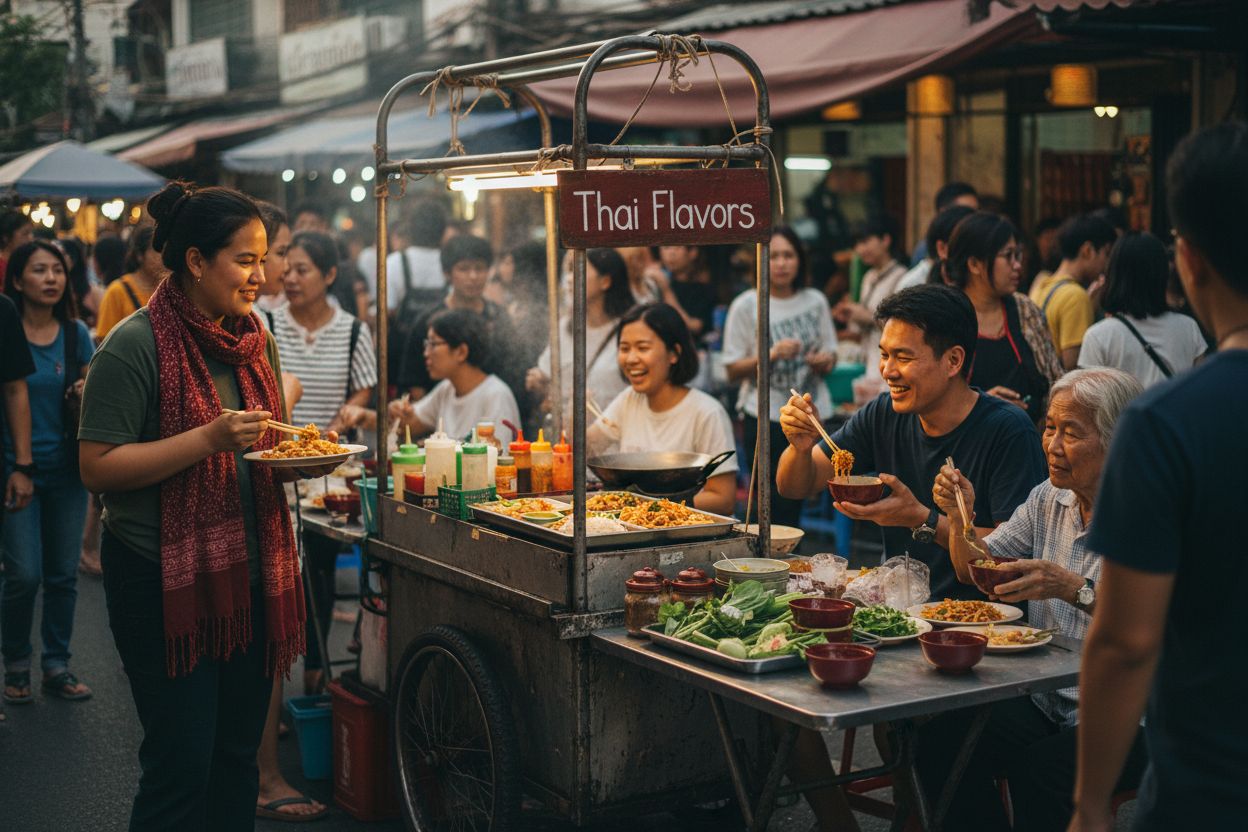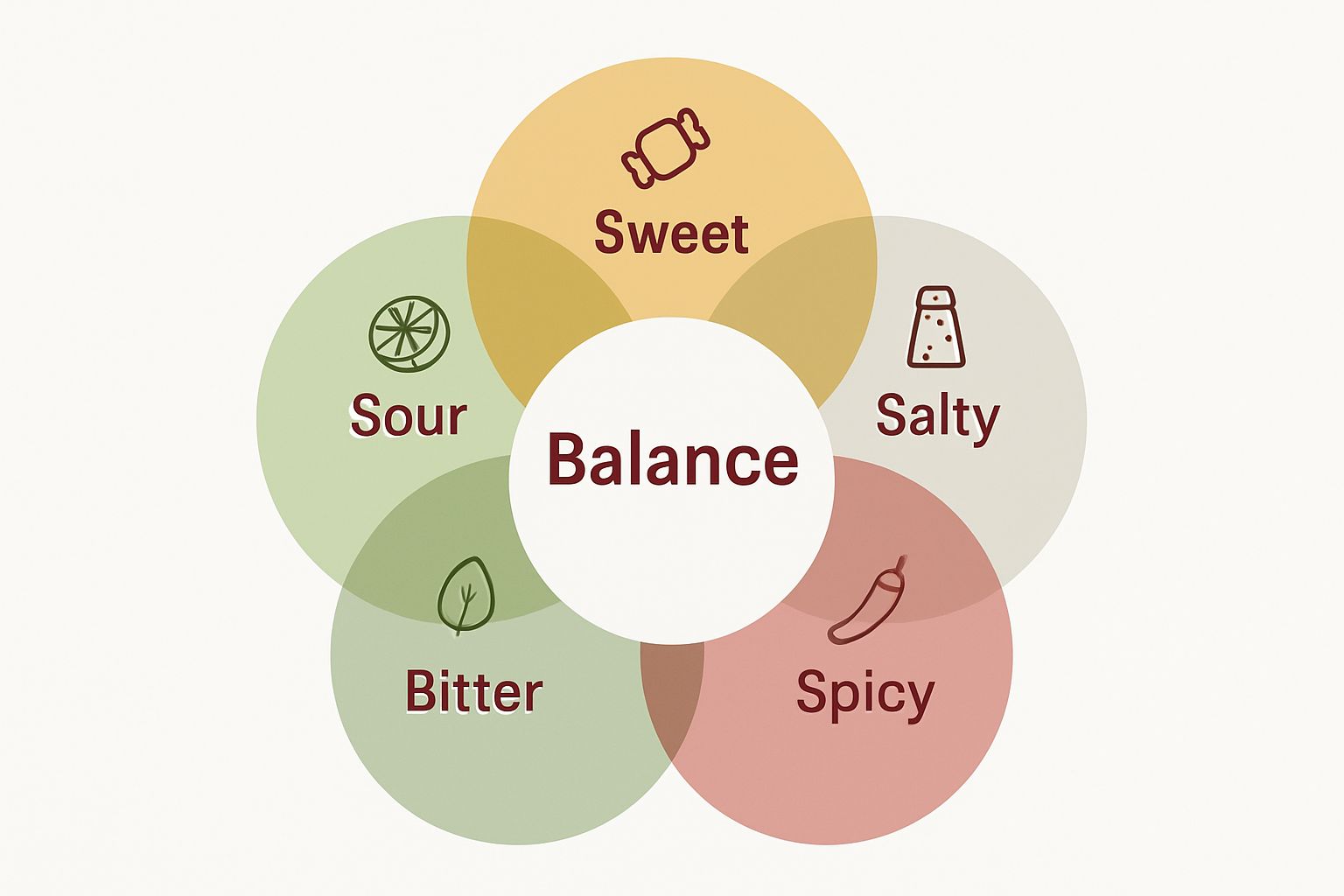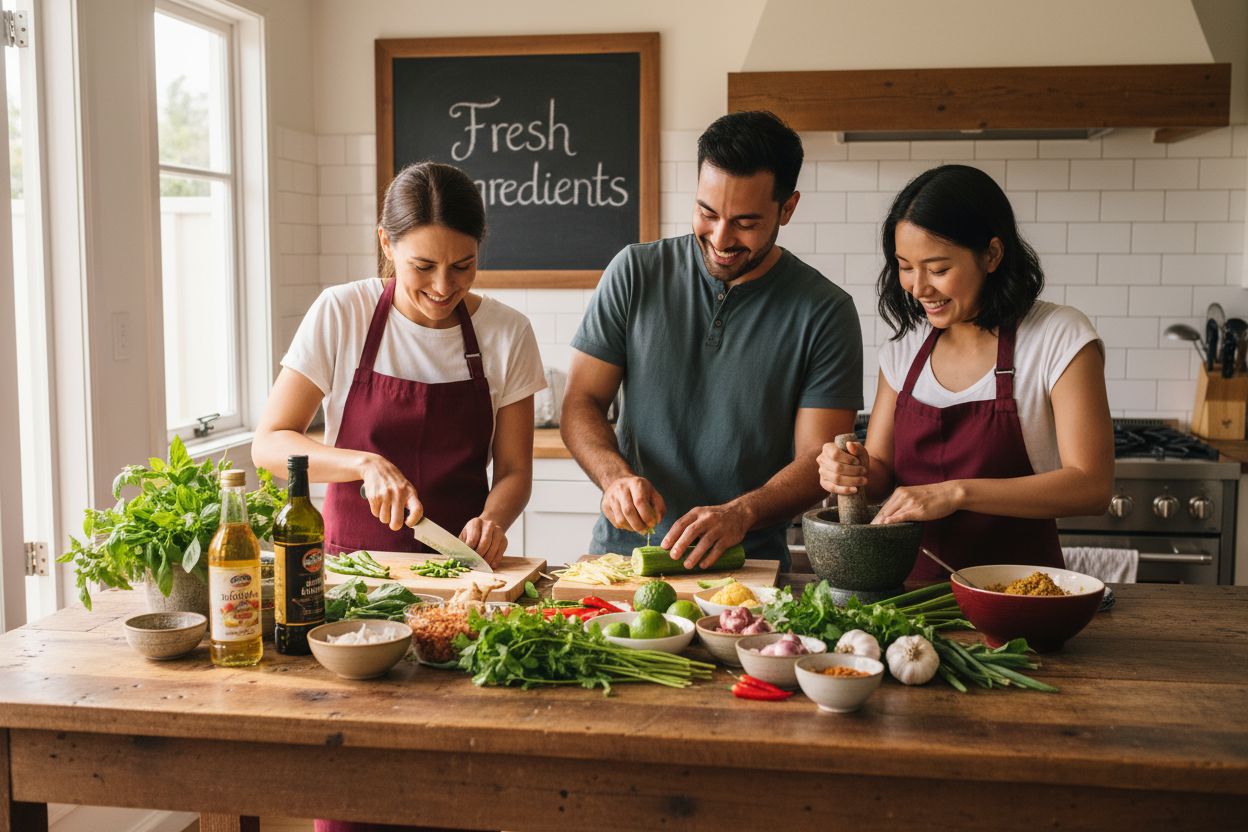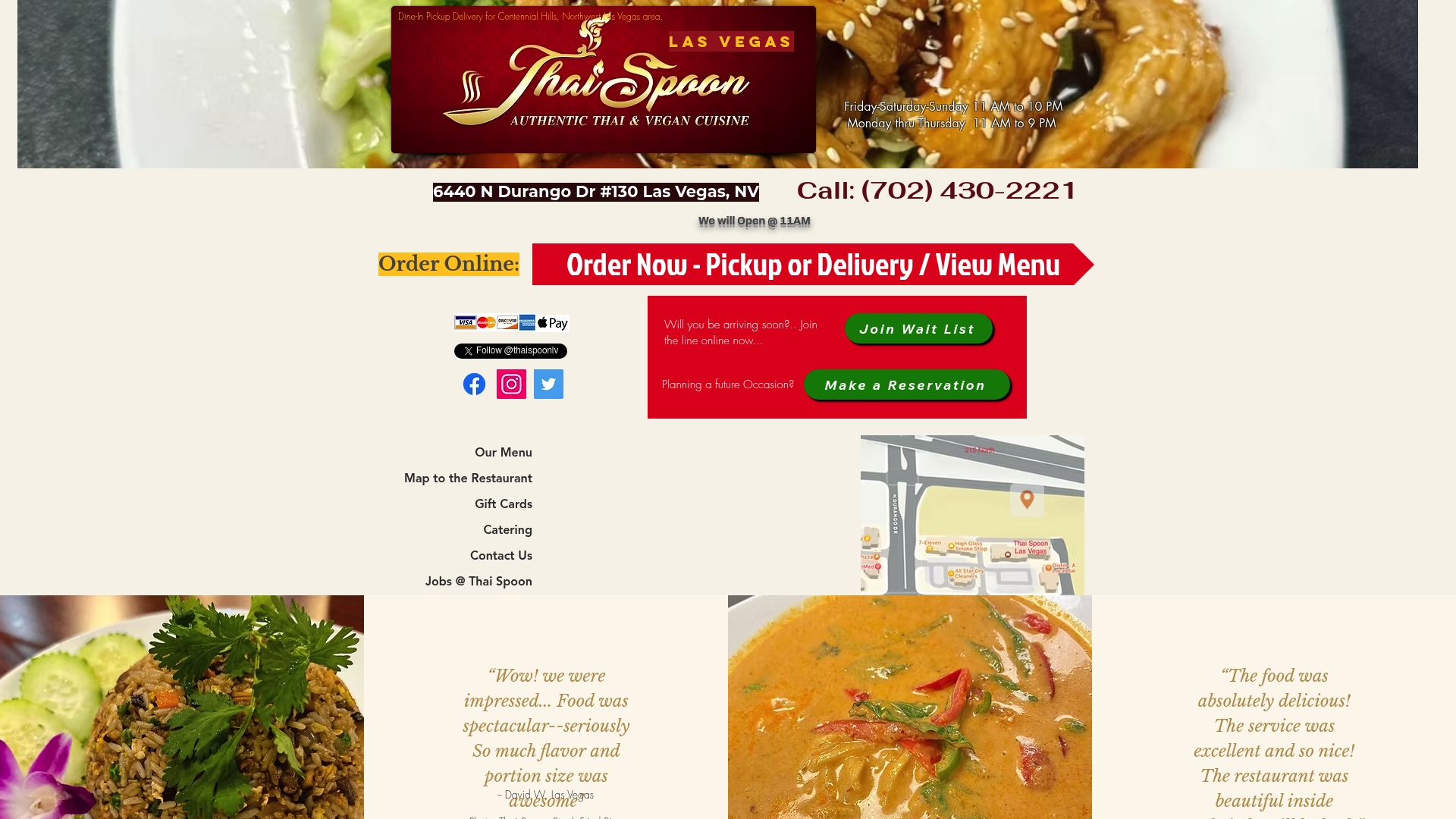Understanding Authentic Thai Flavors: A Comprehensive Guide
- mail469793
- Oct 9
- 8 min read

Thai food is famous for its wild blend of sweet, sour, salty, bitter, and spicy flavors all mixed into one bite. Yet most people never realize that every authentic Thai dish is designed around balancing these five tastes with precision and purpose. The real surprise is that this flavor balancing act does not just set Thai cuisine apart. It comes straight from a deep-rooted tradition where even the tiniest ingredient—from fresh herbs like Thai basil and kaffir lime leaves to chili peppers and aromatics—is carefully chosen to create a symphony on your tongue.
Table of Contents
Quick Summary
Takeaway | Explanation |
Balance sweet, sour, salty, bitter, and spicy | Authentic Thai cuisine harmonizes multiple flavors in each dish for complexity. |
Fresh ingredients are essential | Utilize locally sourced and seasonal ingredients to enhance flavor and nutrition. |
Master Thai cooking techniques | Understanding traditional techniques is crucial for replicating authentic flavors at home. |
Explore regional flavor variations | Familiarize yourself with the different spice levels and ingredients across Thailand’s regions. |
Use key spice combinations | Employ traditional spice blends to convey complex cultural narratives in your cooking. |
What Defines Authentic Thai Flavors?
Authentic Thai flavors represent a complex culinary symphony that transcends simple ingredient combinations. These flavors emerge from a delicate balance of fundamental taste elements that create a unique gastronomic experience, deeply rooted in cultural traditions and regional diversity.
The Core Flavor Philosophy
Thai cuisine operates on a sophisticated principle of balancing sweet, sour, salty, bitter, and spicy elements within a single dish. Research from the National Center for Biotechnology Information highlights how this intricate flavor choreography sets Thai food apart from other culinary traditions. Each recipe aims to create harmony among these taste profiles, ensuring no single flavor dominates.

Key components that define authentic Thai flavors include:
Fresh herbs like Thai basil, kaffir lime leaves, and lemongrass
Umami-rich fish sauce providing depth and saltiness
Chili peppers delivering controlled heat
Lime juice offering bright, acidic notes
Aromatics such as garlic and shallots
Regional Flavor Variations
Thai flavor profiles are not monolithic but reflect significant regional diversity. Northern Thai cuisine tends toward milder, earthier notes with less heat, while Southern Thai dishes often incorporate more intense spice and seafood-based ingredients. These regional nuances demonstrate the complexity of what truly constitutes “authentic” Thai flavors.
Below is a table that summarizes the core regional differences in Thai cuisine, helping readers quickly compare how flavors and ingredients vary across Thailand’s main regions.
Region | Flavor Characteristics | Common Ingredients | Typical Dishes |
Northern Thailand | Milder, earthier, less spicy | Herbs, sticky rice, vegetables | Khao Soi, Sai Ua |
Northeastern (Isan) | Bold, sour, spicy, fermented flavors | Chili, lime, fish sauce, sticky rice | Som Tum, Larb |
Central Thailand | Balanced sweet, salty, and aromatic | Coconut milk, jasmine rice, seafood | Tom Yum, Pad Thai |
Southern Thailand | Most spicy and sour, coconut-rich, seafood | Coconut milk, seafood, chilies | Massaman Curry, Yellow Curry |
To explore more about the intricate world of Thai taste profiles, understanding these fundamental principles becomes crucial for appreciating the depth and sophistication of this remarkable culinary tradition.
The Role of Fresh Ingredients in Thai Cuisine
Fresh ingredients are the cornerstone of authentic Thai cuisine, transforming simple recipes into vibrant, complex culinary experiences. Unlike many other cooking traditions, Thai food relies heavily on immediate, locally sourced produce that captures peak flavor and nutritional potential.
The Importance of Seasonal Sourcing
Research from healthy eating experts emphasizes that Thai cooking prioritizes seasonal ingredients as a fundamental principle. This approach ensures maximum taste, optimal nutrition, and a direct connection to agricultural cycles. Fresh ingredients are not merely a preference but a critical element that defines the cuisine’s character.

Key principles of ingredient selection include:
Immediate harvest to preserve natural flavors
Minimal processing to retain nutritional integrity
Diverse mix of herbs, vegetables, and proteins
Consideration of regional growing seasons
Selection based on peak ripeness and quality
Transformative Power of Fresh Herbs and Aromatics
Herbs and aromatics play a transformative role in Thai cooking, elevating dishes from ordinary to extraordinary. Lemongrass, kaffir lime leaves, Thai basil, and cilantro are not mere garnishes but fundamental flavor architects that provide depth, complexity, and distinctive character to each preparation.
To learn more about the signature spices that make Thai cuisine unique, understanding the critical role of fresh ingredients becomes essential. These components do more than add flavor they represent a culinary philosophy that celebrates natural, unadulterated tastes and celebrates the rich agricultural heritage of Thailand.
Key Spice Combinations and Their Importance in Thai Dishes
Spices represent the heartbeat of Thai culinary artistry, transforming ordinary ingredients into extraordinary gastronomic experiences. These carefully crafted combinations are not merely seasoning but cultural storytellers that communicate complex flavor narratives through every bite.
The Science of Spice Blending
Research from the Journal of Culinary Science reveals that Thai spice combinations are meticulously designed to stimulate multiple sensory receptors simultaneously. This strategic approach creates a harmonious taste experience that goes beyond simple seasoning.
Fundamental spice combinations in Thai cuisine include:
Nam prik pao: A complex chili paste blending dried shrimp, garlic, and shallots
Panang curry mix: Combining roasted peanuts, kaffir lime, and multiple chili varieties
Tom yum spice blend: Integrating lemongrass, galangal, and kaffir lime leaves
Cultural Significance of Spice Traditions
Spice combinations in Thai cooking transcend mere flavor enhancement. They represent generations of culinary wisdom, passed through family recipes and regional traditions. Each blend tells a story of geographical origin, cultural heritage, and agricultural practices.
This table outlines the unique contributions of different cultures to Thai flavor profiles, clarifying how Thai cuisine was shaped through major historical interactions.
Cultural Influence | Contribution to Thai Cuisine | Notable Examples |
Chinese | Stir-frying technique, noodles | Pad See Ew, various stir-fries |
Indian | Complex spice blends, curry powders | Massaman Curry, Indian-influenced curries |
Malay | Coconut-based preparations, spicy stews | Southern-style curries, satay |
Portuguese | Introduction of chili peppers | Spicy curries, chili-laden sauces |
Persian/Arab | Seafood expansion, rice cultivation methods | Rice-based dishes, seafood curries |
To explore the nuanced world of Thai menu selections, understanding these intricate spice combinations becomes crucial. These spice blends are not just ingredients but living cultural expressions that capture the essence of Thai gastronomic complexity.
Cultural Influences on Thai Flavor Profiles
Thai cuisine represents a remarkable culinary tapestry that reflects centuries of cultural interactions, migrations, and historical exchanges. Far from being static, Thai flavor profiles have continuously evolved through complex interactions with neighboring cultures, trade routes, and indigenous traditions.
Historical Trade and Culinary Exchanges
Research from the National Center for Biotechnology Information reveals how historical trade patterns significantly shaped Thai culinary traditions. The interactions with Chinese, Indian, Malay, and European traders introduced transformative ingredients and cooking techniques that would become integral to Thai gastronomy.
Key cultural influences on Thai flavor profiles include:
Chinese immigrants introducing stir-frying techniques
Indian traders bringing complex spice blends
Malay culinary traditions contributing coconut-based preparations
Portuguese influences introducing chili peppers
Persian and Arab traders expanding seafood and rice cultivation methods
Regional Diversity and Culinary Identity
Thailand’s diverse geographical landscape plays a crucial role in flavor development. Coastal regions emphasize seafood and lighter preparations, while northern mountainous areas feature heartier, meat-based dishes with fewer spices. Southern Thai cuisine showcases more intense heat and coconut-based sauces, reflecting its unique cultural and environmental context.
To delve deeper into the rich cultural foundations of Thai cuisine, understanding these intricate cultural influences becomes essential. Each flavor tells a story of migration, adaptation, and culinary innovation that transcends simple recipe construction.
How to Experience Authentic Thai Flavors Anywhere
Authentic Thai flavors are not confined to geographical boundaries but can be recreated through understanding, technique, and carefully selected ingredients. With strategic approaches, food enthusiasts can transform their culinary experiences and transport their taste buds to the vibrant streets of Thailand.
Essential Ingredient Selection
Culinary experts from the International Food Information Council emphasize that ingredient authenticity is crucial for replicating genuine Thai flavor profiles. Sourcing high-quality, fresh ingredients becomes the foundation of creating true Thai culinary experiences.
Key strategies for authentic ingredient selection include:
Purchasing from specialized Asian grocery stores
Selecting fresh herbs like Thai basil and kaffir lime leaves
Investing in quality fish sauce and shrimp paste
Using whole spices instead of pre-ground alternatives
Exploring online specialty ingredient retailers
Mastering Cooking Techniques
Cooking techniques are equally important as ingredients in recreating authentic Thai flavors. Understanding fundamental methods like quick stir-frying, balancing complex flavor profiles, and respecting ingredient preparation techniques can dramatically elevate home cooking.
To discover more about finding authentic local Thai food experiences, exploring these techniques becomes essential. Authentic Thai cuisine is not just about ingredients but about understanding the delicate art of flavor harmony and respectful preparation.
Satisfy Your Craving for Real Thai Flavors—Right Here in Las Vegas
Reading about the complexity of authentic Thai flavors only gets you so far when all you want is to taste that vibrant balance of sweet, sour, salty, and spicy the article describes. Many food lovers struggle to find truly fresh herbs, the right spice blends, or meals that honor traditional Thai cooking. At Thai Spoon Las Vegas, we turn this challenge into an invitation. Our restaurant brings those same culinary principles to life using locally sourced ingredients and focusing on the fresh, bold flavors stressed in the article, from tangy lime and aromatic lemongrass to house-made curries and vibrant stir-fries. Discover the genuine taste of dishes like Pad Thai, Yellow Curry, and Steak Fried Rice with options for every diet, including vegan and gluten-free.

Stop wishing you could taste the real thing. Let your search for authentic Thai food end here by browsing our menu and online ordering options for pickup or delivery. Want to learn even more about the signature spices and flavor profiles we use? Check out our guide on signature Thai spices or explore how to find authentic local Thai food before you order. Experience the flavors discussed in the article, freshly prepared for you at Thai Spoon Las Vegas—visit us online or in person today.
Frequently Asked Questions
What are the core flavors of authentic Thai cuisine?
Authentic Thai cuisine is characterized by a balance of five core flavors: sweet, sour, salty, bitter, and spicy. A well-crafted dish will harmonize these tastes to create a unique and complex flavor experience.
Why are fresh ingredients important in Thai cooking?
Fresh ingredients are crucial in Thai cooking because they enhance the flavor of dishes and ensure optimal nutrition. Seasonal, locally sourced produce captures peak flavor and qualities, forming the backbone of authentic Thai recipes.
How do spice combinations influence the taste of Thai dishes?
Spice combinations in Thai cuisine are designed to stimulate multiple sensory receptors, creating a harmonious taste experience. Each blend carries cultural significance and enhances the overall flavor profile of dishes, making them vibrant and memorable.
What cooking techniques should I learn to replicate authentic Thai flavors?
To replicate authentic Thai flavors, mastering techniques such as quick stir-frying, balancing flavor profiles, and preparing ingredients correctly is essential. These methods play a vital role in achieving the unique taste and texture characteristic of Thai cuisine.
Recommended









Comments